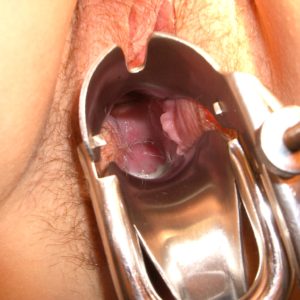Bacterial Vaginosis (BV)
Bacterial vaginosis (BV) is a vaginal condition caused by the overgrowth of bacteria naturally found in the vagina, which upsets the natural pH balance. While BV is not considered an STI and is not contagious, it appears to be more common in sexually active people. BV is treatable but can return after treatment.
BV is not the same as a yeast infection (thrush), which is a fungal infection.
Bacterial vaginosis (BV) is a vaginal condition caused by the overgrowth of bacteria naturally found in the vagina, which upsets the natural pH balance. While BV is not considered an STI and is not contagious, it appears to be more common in sexually active people. BV is treatable but can return after treatment.
BV is not the same as a yeast infection (thrush), which is a fungal infection.
Signs and Symptoms
While bacterial vaginosis can be asymptomatic, if symptoms do occur, it will usually be within four days after your vaginal pH changes. If left untreated, BV can
- increase your chance of getting other STIs and BBVs
- cause Pelvic Inflammatory Disease (PID)
- impact your fertility, and
- cause severe complications during pregnancy.
About 50–75% of people with vaginas who have BV have no symptoms.
If signs or symptoms are present, there may be the following vaginal symptoms:
- Watery, white or grey discharge
- Discharge with strong ‘fishy’ odour
- Irritation around the vaginal opening
- Burning when you pee
An advanced BV infection may lead to an increased risk of:
- Pelvic inflammatory disease (including after surgical abortion, IUD insertion, or other gynaecological equipment)
- Getting chlamydia, gonorrhoea, or herpes type 2 (HSV2)
- Getting or transmitting HIV infection
- Spontaneous abortion
- Premature labour
- Chorioamnionitis (infection of the placenta and the amniotic fluid)
- Postpartum endometritis
Symptom Images (content warning: click or tap to expand)
Common Causes
- The exact cause of BV remains unknown, but we do know that contact with alkaline substances like semen, lubricants, blood, and soap can change the naturally-acidic environment of the vagina, which can allow more bacteria growth.
- Douching can also be a factor because it interrupts the natural flora of the vagina.
- BV is also common among people who are pregnant and is likely triggered by hormonal changes associated with pregnancy.
Prevention
Most episodes of bacterial vaginosis (BV) occur for no apparent reason. While episodes of BV cannot be reliably prevented, the following may help to keep a healthy pH level and prevent bacterial growth:
- Using a condom and a water-based lubricant during intercourse
- Finding the right lube for your body and sticking to it
- Using gloves for fingering or fisting
- Avoid douching (inserting water into the vagina to clean it) – the vagina needs no specific cleaning
- Don’t wash around the vagina and vulva too often
- Avoid adding bath oils, antiseptics, scented soaps, perfumed bubble baths, shampoos, etc., to bathwater
- Avoid using strong detergents to wash your underwear
- Avoid scented ‘intimate hygiene’ products and scented or deodorising products, like sprays and wipes
How can I prevent BV from coming back again?
If you’re diagnosed with BV, your doctor may prescribe antibiotics to treat the infection. BV can return after a few months, even if treatment was successful, which is an issue for many sex workers. Here are some extra things that, combined with the actions above, may help avoid recurrence.
- Avoid using sex toys inside the vagina.
- Use dams for oral sex and avoid using spit as lube – saliva introduces microbes that can cause bacterial overgrowth.
- Avoid thongs/g-strings and tight nylon tights, wear breathable underwear, and consider sleeping without underwear.
- Change liners, pads, or tampons often.
- If moisture builds up or your underwear becomes damp during the day, change it or use panty liners.
- Have showers rather than baths.
- Lighter periods seem to make BV less likely to return, so if you have heavy periods and are considering seeking treatment, this might be another reason to do so.
- Wipe from front to back after peeing or a bowel movement.
- Speak to your doctor about gels that contain lactic acid.
- Speak to your doctor about taking oral Lactobacillus (probiotic) after antibiotic treatment for BV.
- Address stress: high-stress levels can also aggravate recurrent BV.
A note about boric acid
Some sex workers seek an alternative treatment in the form of boric acid suppositories inserted into the vagina and find this to provide relief from BV symptoms. Boric acid is not clinically recommended by our trusted sources of clinical information, and it poses some serious risks. If taken by mouth, it can lead to poisoning and even death. Pregnant people shouldn’t take boric acid, as it can pose risks to a developing foetus.
It is important to acknowledge and address the experiences of our community and the shared knowledge passed between peers. While we cannot recommend or advise against the use of vaginally-inserted boric acid suppositories used to treat BV, we acknowledge that sex workers use and share information about this method, so provide the above information about its potential risks.
Treating sexual partners
- There is no evidence that treating sexual partners with penises prevents sexual partners with vaginas from developing BV.
- If you and your sexual partners both have vaginas, then it does appear that treating them for BV at the same time as you – even if they don’t have symptoms – can prevent recurrence.
Testing
Here’s some information about testing for BV. You can view a list of sex worker-friendly sexual health clinics on our Where To Test page.
Testing method
- Testing for BV is done by a swab taken by a doctor or nurse.
When to test
- Testing will be determined by symptoms. If you have had BV before, letting the doctor or nurse know can be helpful.
- Unless you are pregnant, you do not need further tests to ensure that BV has cleared unless you have ongoing symptoms that you’re concerned about. If you are pregnant, it is suggested that you do a test one month after treatment to ensure that your treatment was successful.
- BV tests are not part of routine sexual health screening, so will only be provided in consultation with your doctor or nurse.
Other info
- Pathology testing is often bulk billed, so the test will most likely be free.
- You may have to pay to see the doctor or be bulk billed.
- Sexual health clinic services are usually free, regardless of your Medicare eligibility.
Treatment
Diagnosed BV is not always treated. No treatment is given if the person is not pregnant or experiencing any symptoms.
Treatment aims to restore the natural acidity of the vagina. Treatments can take the form of:
- Vaginal suppositories/pessaries – available from the chemist or online
- Saltwater vaginal washes
- Prescribed antibiotics from a doctor (you must complete the entire course of the tablets)
- Prescribed vaginal creams from a doctor
Some sex workers use boric acid suppositories, but this can come with serious risks – please see our ‘note on boric acid’ above.
How might this impact my work?
- Irritation can make having sex painful, especially if you have BV often.
- You may have to limit the services you provide to prevent recurrent infections.
- Some workers may feel self-conscious about odour during a BV infection.
- Some antibiotics can reduce the effectiveness of oral contraception (‘the pill’).
- Treatments that are inserted into the vagina, like creams, can degrade condoms and increase the risk of condom breakage
- Before working together, you may want to inform any doubles partners of a BV infection.
You Might Also Be Interested In…
What are BBV & STI?
Lorem ipsum dolor sit amet, consectetur adipiscing elit, sed do eiusmod tempor incididunt ut labore et dolore magna aliqua. Ut enim ad minim veniam, quis nostrud exercitation ullamco laboris nisi ut aliquip ex ea commodo consequat.
Testing Timeframes
Lorem ipsum dolor sit amet, consectetur adipiscing elit, sed do eiusmod tempor incididunt ut labore et dolore magna aliqua. Ut enim ad minim veniam, quis nostrud exercitation ullamco laboris nisi ut aliquip ex ea commodo consequat.
Alternative Services
Lorem ipsum dolor sit amet, consectetur adipiscing elit, sed do eiusmod tempor incididunt ut labore et dolore magna aliqua. Ut enim ad minim veniam, quis nostrud exercitation ullamco laboris nisi ut aliquip ex ea commodo consequat.
Testing Locations
Lorem ipsum dolor sit amet, consectetur adipiscing elit, sed do eiusmod tempor incididunt ut labore et dolore magna aliqua. Ut enim ad minim veniam, quis nostrud exercitation ullamco laboris nisi ut aliquip ex ea commodo consequat.









